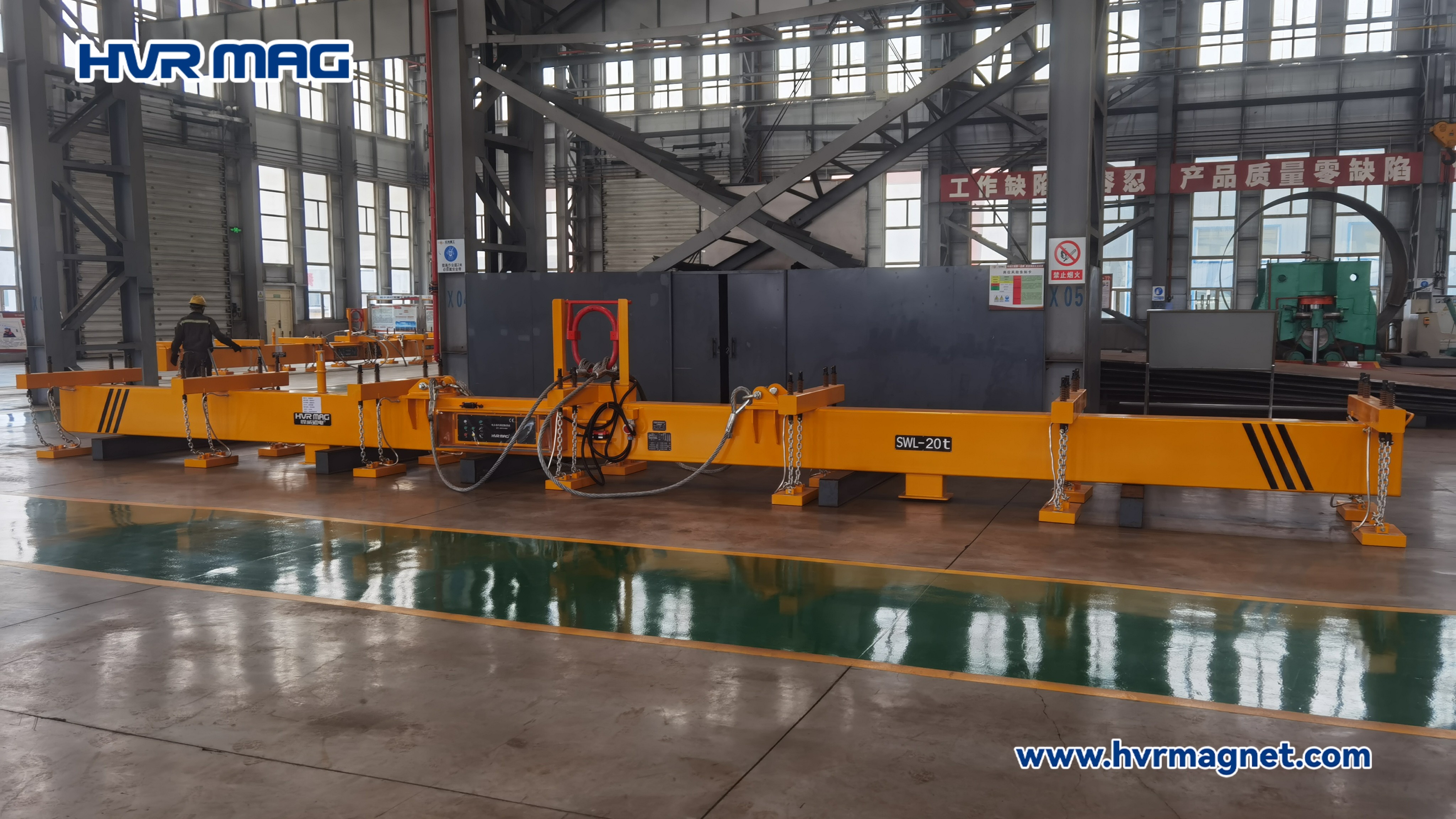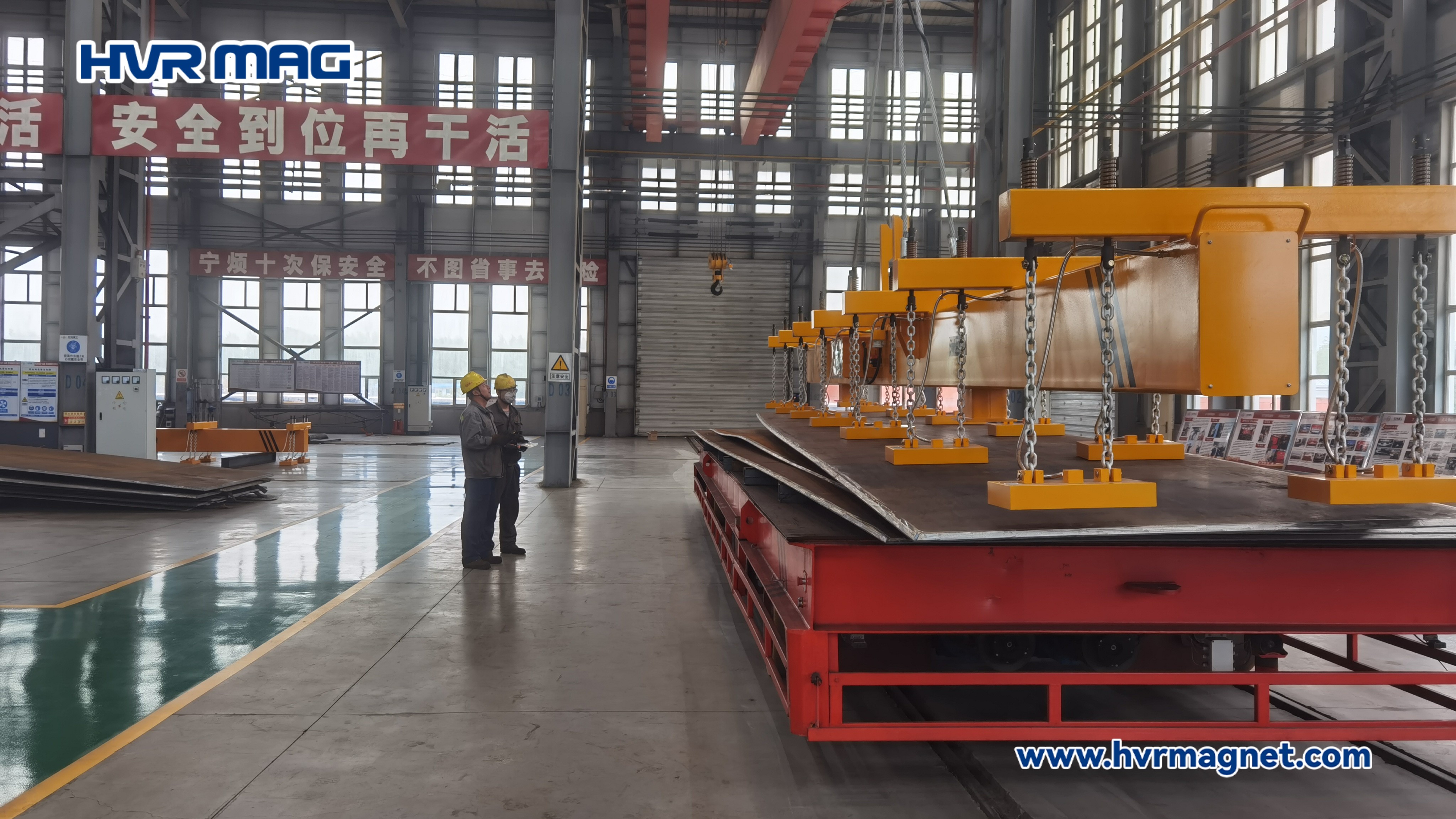Boiler manufacturing involves heavy steel plate handling. It demands reliable and efficient lifting solutions. The use of electro permanent lifting magnets ensures that steel plates are handled with utmost care. Let’s learn how these magnets helps in modern manufacturing through a recent application.


Unlike permanent magnets or electromagnetic systems, electro permanent magnets have a moderate magnetic permeability depth. This characteristic allows them to securely lift one steel plate at a time, minimizing the risk of additional steel plate attachment and accidental detachment.
The integration of an electronic control system enables seamless remote operation of the lifting magnet. From attaching the magnet to the steel plate to magnetizing and demagnetizing as required, all handling processes can be managed by a single operator from a safe distance. This not only enhances worker safety but also streamlines operations, reducing manual labor and increasing overall efficiency.
Improved Safety: By eliminating the need for manual handling and reducing the risk of plate slippage, the electro permanent lifting magnets significantly enhance workplace safety.
Enhanced Efficiency: Remote control functionality and the ability to handle different plate sizes with a single set of magnets streamline operations, reducing turnaround times and increasing production efficiency.
Cost Savings: The efficiency gains translate into cost savings by optimizing labor resources and minimizing downtime associated with traditional handling methods.
By leveraging electro permanent lifting magnets, manufacturers in the boiler industry can significantly enhance their steel plate handling processes. This technology not only improves operational efficiency and safety but also contributes to overall productivity gains. Electro permanent lifting magnets represent a forward-thinking solution for modern manufacturing challenges. For more information, consult HVR MAG at export@hvrmagnet.com
Work directly with our experienced team to solve your toughest engineering challenges